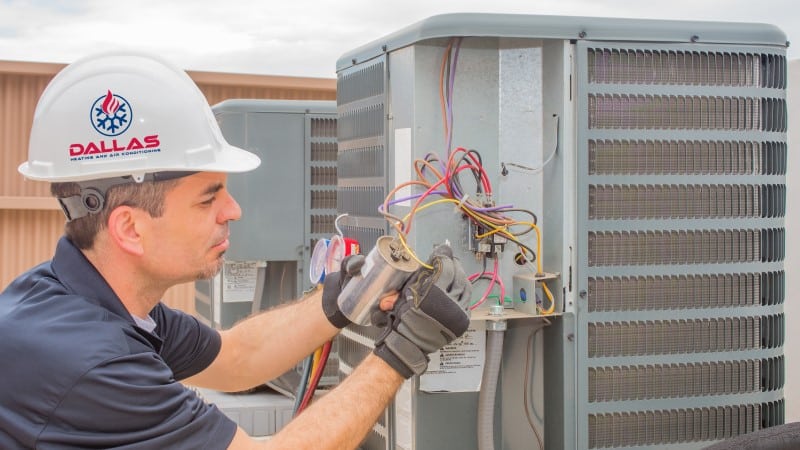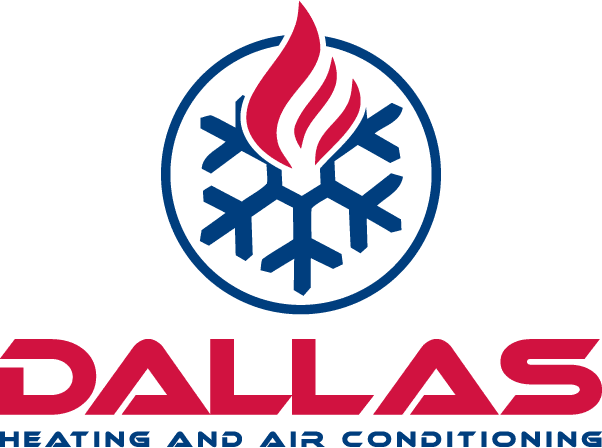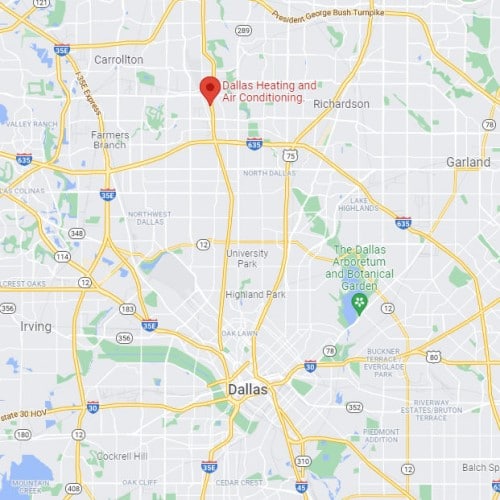AC Repairs - Troubleshooting Capacitors

Table of Contents
- Types of Capacitors
- Identifying Capacitor-Related Issues
- Safety Precautions for Troubleshooting Capacitors
- Diagnosing Capacitor Problems
- Replacing a Faulty Capacitor
- Troubleshooting Intermittent Capacitor Issues
- Preventative Maintenance for Capacitors
- Advanced Capacitor Troubleshooting Techniques
- Capacitor-Related Issues with Other AC Components
- Conclusion
When your AC system stops working, one of the first things we check during the air conditioning troubleshooting process is the capacitor. A capacitor is like a small energy storage device that helps motors in an HVAC system work better. Imagine a capacitor as a little battery that can quickly store and release energy when needed. In an HVAC system, motors need a boost of power to start spinning, and capacitors help provide that extra energy.
There are 2 kinds of capacitors in air conditioner systems. One kind is for starting the motor, and it gives a quick burst of energy to help the motor start spinning. The other kind is for running the motor, and it helps the motor work more smoothly and efficiently while it's running.
We need capacitors in HVAC systems because they help the motors, like the ones that power the fans (indoor blower fan and outdoor condenser unit) and the compressor (in the outside unit), work properly. By offering reliable power and performance, capacitors contribute significantly to the overall efficiency and functionality of HVAC systems. Without capacitors, these motors might have trouble starting or might not work as efficiently, making the HVAC system less effective at keeping our homes comfortable.
Types of Capacitors
Start Capacitors
These capacitors provide a temporary boost of power to help start the motor. They are only active for a short period during startup, then they are disconnected from the circuit. Start capacitors have higher capacitance values (typically in the range of 80-300 microfarads) and are designed to handle high starting torque requirements. These are commonly found in compressors and some high-torque blower motors.
Run Capacitors
These capacitors remain connected to the motor circuit during the entire operation. They help maintain a consistent voltage supply, improve motor efficiency, and increase torque during the motor's running operation. Run capacitors have lower capacitance values (typically between 1-70 microfarads) and are designed for continuous duty. They are commonly found in both condenser fan motors and blower motors.
In some cases, HVAC systems may use a dual capacitor, which combines both start and run capacitors into a single unit. This design simplifies wiring and saves space. A dual capacitor usually has three terminals: one common (C), one for the fan motor (F), and one for the compressor or blower motor (H or M).
It's important to note that capacitors used in HVAC systems are usually non-polarized electrolytic or polypropylene film capacitors, specifically designed for motor applications. They are rated for alternating current (AC) use and have a specific voltage rating and capacitance value.
Identifying Capacitor-Related Issues
Capacitor-related issues can cause various problems in your HVAC system, impacting its performance and efficiency. To effectively troubleshoot and repair these issues, it's essential to recognize the symptoms of a failing capacitor, perform a visual inspection, and test the capacitor's functionality. In this section, we'll delve into these three aspects to help you diagnose capacitor-related issues confidently.
Common Symptoms of a Failing Capacitor
When a capacitor starts to fail, it can exhibit several noticeable symptoms that can help you pinpoint the problem. Some common symptoms include:
- Difficulty starting: If the compressor or fan motor struggles to start or doesn't start at all, a faulty start capacitor might be the culprit.
- Intermittent operation: A failing run capacitor can cause motors to run intermittently or stop and start frequently.
- Reduced efficiency: HVAC systems with failing capacitors may consume more energy and struggle to maintain the desired temperature.
- Unusual noises: Humming or clicking sounds coming from the motors may indicate a problem with the capacitor.
- Overheating: A failing capacitor can cause the motor to work harder and overheat, potentially leading to system shutdown or damage.
Visual Inspection: Bulging, Leaking, or Damaged Capacitors
A visual inspection can reveal physical signs of damage to a capacitor. Before inspecting the capacitor, always turn off the power to the HVAC system and follow safety precautions. Look for the following signs:
- Bulging: A healthy capacitor should have a flat top. If the top is bulging or dome-shaped, it's likely that the capacitor has failed.
- Leaking: A leaking capacitor may have oily or corrosive substances around it, indicating that the internal electrolyte has leaked out and the capacitor is no longer functional.
- Damage: Check for any visible cracks, ruptures, or burn marks on the capacitor's casing, which may signify a failure.
Testing Capacitors: Multimeter and Capacitor Testers
If there are no visible signs of damage, you can use a multimeter or a dedicated capacitor tester to check the capacitor's functionality. Before testing, ensure the capacitor is discharged safely to prevent electric shock.
- Using a multimeter: Set the multimeter to the capacitance setting (usually denoted by the symbol "µF" for microfarads). Place the probes on the capacitor's terminals, and compare the reading with the capacitor's rated capacitance. A significant deviation from the rated value indicates a faulty capacitor.
- Using a capacitor tester: These specialized testers are designed to test capacitors accurately. Connect the capacitor to the tester according to the manufacturer's instructions, and observe the reading. A reading outside the acceptable tolerance range (usually ±5% to ±10% of the rated capacitance) suggests the capacitor is failing.
By understanding the symptoms of a failing capacitor, conducting a visual inspection, and testing the capacitor's functionality, you can accurately identify capacitor-related issues in your HVAC system and proceed with the necessary repairs.
Safety Precautions for Troubleshooting Capacitors
When you're working on capacitors, safety should always be a top priority. Follow these safety precautions to protect yourself and the equipment while troubleshooting capacitors.
Disconnecting Power to the HVAC System
Before attempting any troubleshooting or repairs, always disconnect power to the HVAC system - turn off the circuit breaker or disconnect switch that supplies power to the unit. Double-check that the power is off by using a non-contact voltage tester or a multimeter to ensure there is no live voltage present.
Discharging Capacitors Safely
Capacitors can store electrical energy even after the power is disconnected. To prevent electric shock, you must discharge the capacitor safely. Use an insulated screwdriver with a plastic handle, or a pair of insulated pliers. Place the metal end of the tool across the capacitor's terminals, ensuring that you're holding the insulated handle only. This will create a short circuit between the terminals, allowing the stored charge to dissipate safely.
Handling Capacitors: Protective Gear and Best Practices
It's essential to follow best practices and use appropriate protective gear:
- Wear safety glasses: This will protect your eyes from any potential sparks or debris that might be released during the troubleshooting or repair process.
- Use insulated tools: Insulated tools protect you from accidental contact with live electrical components, reducing the risk of electric shock.
- Avoid touching capacitor terminals with your bare hands: Even if you've discharged the capacitor, it's best to avoid touching the terminals with your bare hands. Instead, handle capacitors by their casing or use insulated pliers or gloves.
- Work in a well-lit area: Proper lighting ensures you can see what you're doing, reducing the risk of mistakes or accidents.
By following these safety precautions, you can minimize the risks associated with troubleshooting and repairing capacitor-related issues in HVAC systems.
Diagnosing Capacitor Problems
To accurately diagnose capacitor problems in your HVAC system, you'll need to evaluate the capacitor's voltage and microfarad ratings, determine its tolerance deviation, and assess the performance of the connected motor. This section will guide you through these steps to help you identify and address capacitor-related issues effectively.
Evaluating Capacitor Voltage and Microfarad Ratings
Each capacitor has a specific voltage and microfarad (µF) rating, which is usually printed on it's side. The voltage rating indicates the maximum voltage the capacitor can handle, while the microfarad rating represents the capacitance value. When diagnosing capacitor problems, ensure that the installed capacitor matches the specifications recommended by the manufacturer for the corresponding motor.
Determining Capacitor Tolerance Deviation
Capacitors have an acceptable tolerance range, typically ±5% to ±10% of the manufacturer's rated capacitance. When testing a capacitor's microfarad value using a multimeter or a capacitor tester, compare the measured value with the rated value. If the measured capacitance falls outside the specified tolerance range, the capacitor is likely faulty and needs to be replaced.
Assessing Motor Performance: Start and Run Capacitors
Capacitor problems can manifest differently, depending on whether the issue lies with the start or run capacitor. Here's how to assess the motor performance for each capacitor type:
- Start Capacitors: A faulty start capacitor may cause the motor to struggle during startup, produce a loud humming noise, or fail to start altogether. If you observe any of these symptoms, first verify the capacitor's capacitance value and check for visible damage. If the capacitor appears to be the issue, replace it with one that matches the manufacturer's specifications.
- Run Capacitors: A failing run capacitor can cause the motor to overheat, run inefficiently, or cycle on and off frequently. To diagnose a run capacitor issue, monitor the motor's temperature and performance. If you notice signs of overheating or inconsistent operation, test the capacitor's capacitance value and inspect it for visible damage. Replace a faulty run capacitor with one that meets the manufacturer's specifications.
By evaluating the capacitor's voltage and microfarad ratings, determining tolerance deviation, and assessing motor performance, you can accurately diagnose capacitor problems and take the necessary steps to resolve them.
Replacing a Faulty Capacitor
If you found a capacitor issue, the next step is to replace the faulty capacitor with a new one. This section will guide you through the process of safely removing the old capacitor and installing a new one that matches the manufacturer's specifications.
Preparing for Capacitor Replacement
Before you begin the capacitor replacement process, gather the necessary tools and materials, and ensure that you follow proper safety precautions:
- Disconnect power to the HVAC system: Turn off the circuit breaker or disconnect switch that supplies power to the unit, and double-check that the power is off using a non-contact voltage tester or multimeter.
- Discharge the capacitor: Safely discharge the capacitor to prevent electric shock, as described in the "Safety Precautions for Troubleshooting Capacitors" section.
Removing the Faulty Capacitor
To remove the faulty capacitor, follow these steps:
- Locate the capacitor: Find the capacitor within the HVAC system, typically inside the condenser unit or air handler.
- Take a photo or make a note of the wiring connections: This will help you ensure that the new capacitor is wired correctly. Be sure to note which wires are connected to the "C" (common), "FAN," and "HERM" (compressor) terminals.
- Disconnect the wires: Carefully remove the wires from the capacitor's terminals using a pair of needle-nose pliers or a small flathead screwdriver. Be sure to handle the wires gently to avoid damaging them.
- Remove the capacitor: Unscrew or unclip the capacitor from its mounting bracket and carefully remove it from the unit.
Installing the New Capacitor
To install the new capacitor, follow these steps:
- Verify the new capacitor's specifications: Ensure that the new capacitor's voltage and microfarad ratings match the faulty capacitor's ratings and the manufacturer's recommendations.
- Mount the new capacitor: Secure the new capacitor to the mounting bracket using screws or clips, depending on the design of your HVAC system.
- Reconnect the wires: Referring to the photo or notes you took earlier, reconnect the wires to the appropriate terminals on the new capacitor. Double-check that the connections are secure and correct.
- Test the HVAC system: Reconnect power to the HVAC system and turn it on to ensure that it's operating correctly. If the system runs smoothly and the capacitor-related issue is resolved, the replacement was successful.
By following these steps, you can safely and effectively replace a faulty capacitor in your HVAC system and restore its optimal performance.
Troubleshooting Intermittent Capacitor Issues
Intermittent capacitor issues can be challenging to diagnose, as they may cause sporadic performance problems that seem to resolve on their own. Let's discuss some common causes of intermittent capacitor issues and tips on how to troubleshoot and fix them.
Temperature-Related Issues
Temperature fluctuations can impact the performance of capacitors. When a capacitor is exposed to high temperatures, its capacitance value may temporarily change, leading to intermittent issues. Check the following:
- Check for proper ventilation: Ensure that the system components, including the capacitors, have adequate ventilation and are not exposed to excessive heat.
- Location: If the capacitor is located near a heat source, consider using a heat shield to protect it from high temperatures.
Loose or Corroded Connections
Loose or corroded connections can cause intermittent capacitor issues, as they may disrupt the flow of electrical current. To troubleshoot connection related problems:
- Disconnect power to the HVAC system: Turn off the circuit breaker or disconnect switch that supplies power to the unit, and double-check that the power is off using a non-contact voltage tester or multimeter.
- Inspect the capacitor's connections: Check the wires connected to the capacitor's terminals, looking for signs of corrosion, loose connections, or damaged insulation.
- Clean or replace corroded connections: If you find any corroded connections, clean them using a wire brush or replace them entirely, as needed.
- Tighten loose connections: If you find any loose connections, use a pair of pliers or a small flathead screwdriver to gently tighten them.
Failing Capacitors with Intermittent Performance
In some cases, a capacitor may be on the verge of failing but still function intermittently. This can make it difficult to diagnose the issue using standard capacitor testing methods. To troubleshoot a capacitor with intermittent performance, try the following:
- Monitor system performance closely: Pay close attention to the HVAC system's performance, noting any patterns or specific conditions that seem to trigger the intermittent issue.
- Test the capacitor under load: Consult with a professional HVAC technician to perform an under-load test, which can help identify failing capacitors that still function within their tolerance range when tested with a multimeter or capacitor tester.
- Consider preemptive replacement: If the capacitor is old or nearing the end of its expected service life, consider replacing it as a precautionary measure, even if it passes standard tests.
By addressing temperature-related issues, inspecting connections, and closely monitoring system performance, you can effectively troubleshoot and resolve intermittent capacitor issues in your HVAC system.
Preventative Maintenance for Capacitors
Preventative maintenance can help prolong the life of capacitors in your AC system, reduce the chance of failures, and maintain the system's overall efficiency. Now we'll provide some maintenance tips and best practices to help you keep your AC system's capacitors in top condition.
Regular HVAC System Inspections
Scheduling regular professional inspections for your HVAC system can help identify potential issues early, including those related to capacitors. During an inspection, a trained technician will examine the system's components, test capacitors, and assess the overall condition of the system. Ideally, you'd want to inspect the capacitors at least once a year, preferably during the spring - before the summer heat kicks in.
Visual Inspections of Capacitors
In addition to professional inspections, you can also perform periodic visual inspections of the capacitors in your HVAC system. Check for signs of damage - for example bulging, leaking, or cracking -as well as any loose connections or mounting brackets. If you notice any issues, consult a professional technician for further assessment and repairs.
Maintain a Clean and Debris-Free Environment
Keep the area around your AC condenser unit clean and free of debris to help prevent damage to capacitors and other components. Regularly clean the condenser unit's coils and fins, and remove any leaves, grass, pollen or dirt that may accumulate around the unit. This will help maintain airflow, reduce stress on the system, and minimize the chances of capacitor-related issues.
Monitor System Performance
Pay attention to your HVAC system's performance and take note of any unusual behaviors or changes in efficiency. If you notice signs of capacitor failure, such as difficulty starting, intermittent operation, or unusual noises, address the issue promptly to prevent further damage to the system.
Replace Aging Capacitors
Capacitors have a limited lifespan, and their performance may degrade over time. As a preventative measure, consider replacing capacitors that are nearing the end of their expected service life, even if they haven't shown signs of failure. This can help prevent unexpected system breakdowns and maintain the efficiency of your HVAC system.
By following these preventative maintenance tips, you can extend the life of your HVAC capacitors, reduce the likelihood of unexpected failures, and keep your system running smoothly and efficiently.
Advanced Capacitor Troubleshooting Techniques
For more complex capacitor-related issues, advanced troubleshooting techniques may be necessary. In this section, we'll explore some methods for diagnosing challenging capacitor problems, including using specialized testing equipment, analyzing capacitor performance under varying conditions, and consulting with experienced professionals. For most people though, this step is overkill. If you suspect a capacitor is bad, the cost of removing and replacing it minimal compared to the time and expense of specialized capacitor test equipment. Nonetheless, if you want to go down this path, read this next section, otherwise skip to the next section.
Using Specialized Testing Equipment
Standard multimeters and capacitor testers can measure capacitance values, but specialized testing equipment may be required for a more in-depth analysis of capacitor performance. Some advanced testing tools include:
- Electrolytic Capacitor Analyzer (ECA): An ECA can measure a capacitor's equivalent series resistance (ESR) and dissipation factor, providing more information about its internal resistance and energy loss.
- LCR Meter: An LCR meter can measure a capacitor's inductance (L), capacitance (C), and resistance (R) with high precision, enabling a more accurate assessment of the capacitor's performance.
Analyzing Capacitor Performance Under Varying Conditions
To thoroughly evaluate a capacitor's performance, you may need to analyze its behavior under various conditions, such as different temperatures, voltages, or frequencies. Some techniques for doing this include:
- Temperature cycling: Subject the capacitor to a range of temperatures and monitor its performance to determine if temperature fluctuations are causing issues.
- Voltage and frequency testing: Test the capacitor at different voltages and frequencies to assess its performance under various operating conditions.
Capacitor-Related Issues with Other AC Components
Problems with capacitors can impact other components in the AC system - it's important to understand how capacitors and the other components to ensure the whole system works properly. In this section, we'll discuss the potential impact of capacitor issues on other components and the importance of addressing capacitor problems promptly.
Capacitors and Compressors
A failing or faulty start or run capacitor can lead to problems with the compressor, which is the heart of the HVAC system. When a capacitor isn't functioning correctly, the compressor may experience the following issues:
- Difficulty starting: A failing start capacitor may not provide the necessary boost to start the compressor, resulting in hard starts or failure to start at all.
- Overheating: A faulty run capacitor may cause the compressor to overheat, potentially leading to permanent damage or reduced lifespan.
- Increased energy consumption: If the compressor struggles to start or operates inefficiently due to capacitor issues, the HVAC system may consume more energy, leading to higher utility bills.
Capacitors and Blower Motors
Similarly, capacitor issues can also impact the blower motor, which is responsible for circulating air throughout your home. Problems with the blower motor related to capacitor issues include:
- Inconsistent airflow: A faulty run capacitor may cause the blower motor to operate inefficiently, resulting in inconsistent or weak airflow throughout your home.
- Motor overheating: If the blower motor's capacitor is failing, the motor may overheat, potentially causing permanent damage or reducing its lifespan.
- Noise and vibration: Capacitor issues can cause the blower motor to produce unusual noises or vibrations during operation.
Importance of Addressing Capacitor Problems
Addressing capacitor problems promptly is essential to maintaining the health of your HVAC system and preventing damage to other components. If you think a capacitor is failing or faulty:
- Diagnose the issue: Use the troubleshooting techniques discussed earlier to accurately diagnose the problem.
- Replace faulty capacitors: If you think that a faulty capacitor is the cause of the issue, replace it promptly to prevent further damage to the AC system.
- Monitor system performance: Keep a close eye on your HVAC system's performance after addressing capacitor issues to ensure that other components are functioning correctly and efficiently.
Now that you understand the relationship between capacitors and other AC system components, you can effectively diagnose and resolve capacitor-related issues and maintain the optimal performance of your entire air conditioning system.
Conclusion
In this comprehensive guide, we've covered various aspects of troubleshooting and repairing capacitor-related issues in central air conditioning systems. Capacitors play a big role in the operation of an AC system - ensuring the proper functioning of compressors and blower motors. By knowing about the types of capacitors used in AC systems, their functions, and where to find them, you can better diagnose and address capacitor problems.
We've explored various troubleshooting techniques, ranging from basic visual inspections to advanced diagnostic methods using specialized equipment. Also, we've discussed the importance of preventative maintenance, safety precautions, and the impact of capacitor issues on other AC components.
It's vitally important to remember that working on an AC system can be really dangerous. Capacitors store lots of electrical energy, and improper handling can result in electric shocks, injuries, or damage to your AC system. It's best to call in professional help when needed. It's better to call out a pro rather than risk saving a few bucks to end up in the hospital.
When faced with complex capacitor-related issues or if you need professional assistance, Dallas Heating and Air Conditioning is one of the best AC repair companies in the DFW metroplex. Their experienced technicians can help diagnose and resolve any capacitor problems, ensuring the optimal performance and longevity of your air conditioning system.
By following the guidance provided in this article and seeking professional help when necessary, you can keep your AC running efficiently and avoid costly repairs or replacements due to capacitor-related issues.
If you enjoyed this article, check out these other articles about troubleshooting:
AC Repairs - Troubleshooting Blocked Condensate Drain
Diagnosing A Bad Blower Motor


